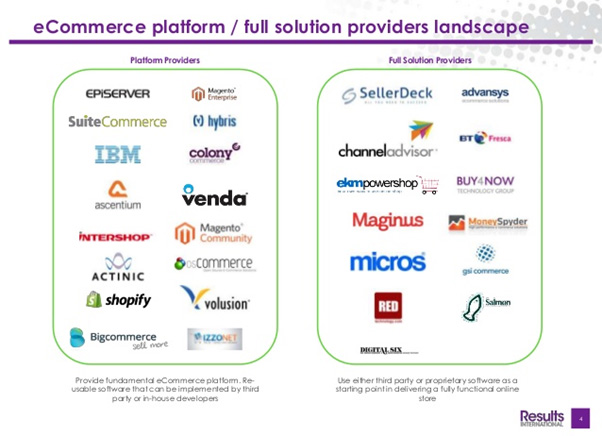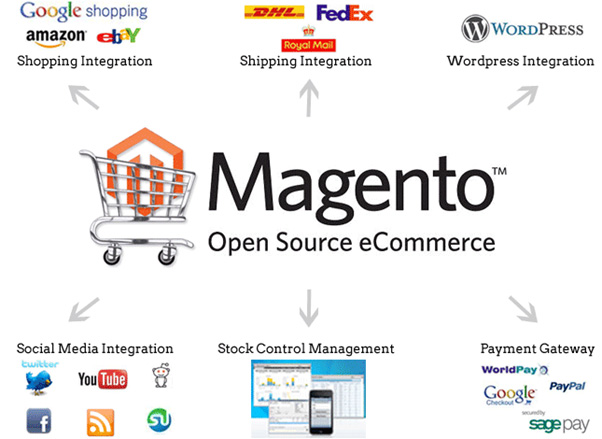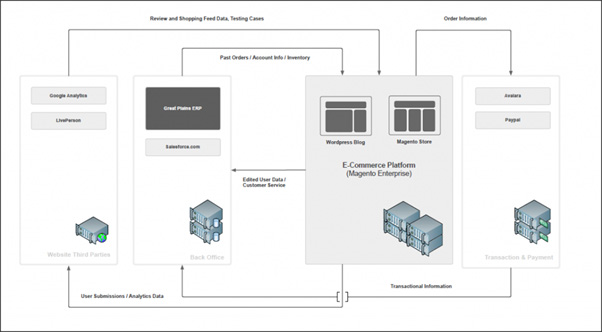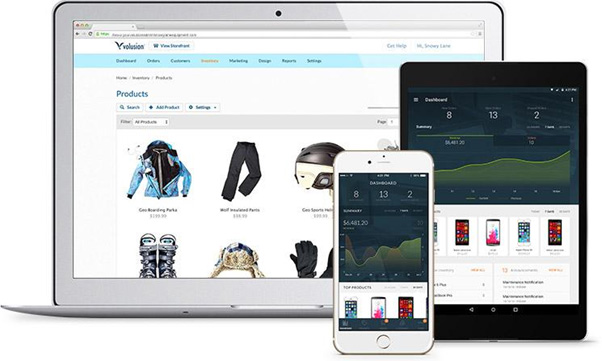If you’ve got the entrepreneurial itch, you might be considering selling products online.
If so, welcome to the world of third-party ecommerce platforms.
Using third-party ecommerce platforms is generally a good idea. In this article, I will walk through some of the issues that will help you power your dream and boost your revenue.
Are Third-Party Ecommerce Platforms Truly Effective At Boosting Revenue?
The simple answer is yes.
Think of it this way. When you start a business — any business — there are a million things to do. Creating a website, selecting products, shipping products, managing payment options, and improving sales can all be overwhelming.
Ecommerce platforms simplify everything.
They do a lot of the work for you. The fact that ecommerce platforms employ smart marketers with years of experience, savvy developers, and talented designers means that you get to purchase all of this for a fraction of the price.
Here are some of the ways that third-party platforms can boost revenue:
- High volume order processing
- Multiple payment options — PayPal, BitCoin, different currencies and languages
- Mobile checkout interface
- Built-in email marketing and newsletters
- Gift card and coupon integration
- Abandoned cart protection
- Ecommerce experts and consultants available for advice (and upsells)
Managing all of these features on your own is incredibly time-consuming and can be counterproductive.
At the very least, starting out with a third-party ecommerce platform makes solid business sense.
The point is, third-party ecommerce providers will boost your revenue. As long as you’re using good business sense, tracking your analytics, following the money, and working smart, you gain an incredible advantage through choosing a reliable and feature-rich ecommerce platform.
What Are The Disadvantages Of Using A Third-Party Ecommerce Platform?
With all the massive advantages behind third-party ecommerce systems, are there any disadvantages?
Yes, but…
First, the but. This article focuses on the revenue side of ecommerce. There are, of course, other factors to keep in mind — important ones. You want to build a brand, create a legacy, establish a business, be known for something great, get bought out, achieve high valuation status, pivot your business in another direction, etc.
All of that is important, valid, and worthy of deep consideration.
At the same time, a business exists to make money. Revenue must be part of your consideration if you expect to stay afloat, let alone thrive.
Often, the most effective way to do that is by choosing a third-party platform. These systems are designed to save time and money, a business’s two most essential assets.
By choosing an alternate route — no third party platforms involved — you are embracing a new set of risks and disadvantages.
In this case, the risks and disadvantages are lost revenue potential. Why? Because you are spending more time and money creating your own platform rather than using an existing one.
Now, let me share some of those risks.
You Are Building Your Business On A Platform Owned By Someone Else
This is inherently risky. Anytime you surrender something as foundational as a platform, you’re surrendering a great deal of control.
- What if the third-party platform goes under? You’re toast.
- What if the third-party platform drastically changes their policy? Your business could suffer.
- What if the third-party platform jacks up their prices? You pay the difference.
By purchasing someone else’s platform, you lose control.
You Are Limited In What You Can Do
If you are selling on a third-party platform, you have to work within their structure and with their features.
It’s harder to perform custom split testing or iterate CRO changes on the fly. With most ecommerce platforms, you are using their proprietary CMS.
For those who aren’t developers or designers, this is fine. You’re not necessarily interested in tweaking CSS files or integrating an API.
But for those who want to take their business to new levels of disruption and innovation, this limitation may turn into a serious frustration.
The issue isn’t as stark as it might seem. In other words, you don’t have to choose between surrendering all control to a third-party and creating your exclusively owned site and system.
There are choices between full-service platform providers and solution providers, for example.

As an illustration, you can choose an open source ecommerce system like Magento to provide ecommerce functionality while at the same time controlling a vast swath of design and development.

You control most aspects of the operation, while Magento provides your ecommerce power.

Source
Or, you can create a WordPress site, integrate powerful ecommerce plugins like WooCommerce, and have your store up and running on a site that you design and control.
You may create your own ecommerce site, then choose to use third-party providers for select aspects like your payment gateway.
What Are The Third-Party Ecommerce Platform Options?
You have choices.
There are dozens of ecommerce platforms to choose from. To simplify, here are the top six.
1. Shopify
Shopify is the most well-known online shopping tool. It’s relatively easy to set up a store and start selling products. A lot of smaller shops choose Shopify because it’s inexpensive.

There are some nice perks to using Shopify. Some have a price; others are free. For example, you can sell unlimited products and have unlimited bandwidth. Perks that will cost you are features like abandoned shopping cart recovery.
Starting price: $14/month
2. BigCommerce
BigCommerce is another option, complete with some of the advanced ecommerce features that you’d want for high conversion rates.

More mid-sized ecommerce sites choose BigCommerce. Their marketing and conversion tools provide some helpful features to improve sales.
Starting price: $29.95/month
3. Aabaco Small Business (formerly Yahoo)
Yahoo entered the ecommerce game early, and they are still one of the largest players. However, they didn’t grow as fast as newer startups, and their market share started to slip. They recently changed their name to Aabaco.
![]()
Aabaco allows for UPS shipping integration, quick payment setup, and helpful actionable insights for store owners.
Starting price: $19.95/mo
4. Squarespace
Squarespace has some great marketing, and their templates are slick and functional. Even if you have no eye for design, you can launch an impressive interface very quickly.

With Squarespace, you are limited to using Stripe for payments and transactions. Stripe’s payment processing is safe and reliable, but it charges a 2.9% fee, plus 30 cents per transaction.
Starting cost: $10/mo
5. Amazon
Amazon is the world’s largest ecommerce platform. With more than 2 million sellers and 200 million customers, it has a lot of action.
Unlike the other platforms, Amazon is focused on selling products, not building your own ecommerce store. While this may not be recommended for some business models, it’s actually a huge advantage. Amazon has an existing customer base and brand integrity.
Amazon is also competitive. In order for your product to sell well, you’ll need to rank higher for customer queries. This requires getting solid reviews and seller ratings. An entire cottage industry of consultants and marketers has arisen to fill the need for Amazon marketing assistance.
Cost: $39.99 for more than 40 items a month. $0.99 plus fees for fewer than 40 items a month. The most successful sellers choose to sell Fulfilled By Amazon (FBA), which allows their products to be packed and shipped by Amazon. This opens up the product to Amazon Prime eligibility. The fee structure is different for FBA.
6. Volusion
Many larger sites choose Volusion. Their powerful features and solid reputation in the marketplace make them a great choice.

Volusion merchants have generated more than $18 billion in sales, which says a lot about the power of the platform. You can also choose from more than 50 gateways, which gives you a lot of freedom.
Starting price: $15/mo
What If I Want To Build My Own Brand?
You can easily build your own brand using any third-party platform. These sites are designed to help business owners launch quickly and successfully.
The only possible exception is Amazon. Even with Amazon, you can build a successful independent brand, and simply use their platform as an outsourced fulfillment source.
When you sell on Amazon, you lose some of the proprietary store power that other ecommerce platforms have. What you lose in independence, however, you may gain in sales and revenue.
For many ecommerce businesses, priority one is to make money. There are ways to make a lot of money on Amazon, by understanding the ranking algorithm, generating reviews, and marketing successfully.
Your brand can be established independent of Amazon, but it won’t be as visible to Amazon buyers.
Take this product, for example. It’s a digital stylus.

The brand, FiftyThree, gets very low visibility above the fold. All you see is their brand name in the product, and a small “by FiftyThree.”
When you scroll below the fold, however, you get a bigger picture of the brand. They provide a video, headshots of the startup team members, a Q&A surrounding their brand, and more information about the product.
Not all brands get this level of visibility and exposure, but the point is this: You won’t lose your brand identity by selling on Amazon.

FiftyThree has a robust brand presence and successful website apart from their Amazon sales.

Boosting revenue means that you’ll choose the platforms and options that provide the most promise, flexibility, power, and customers.
Keep in mind, it’s not an either/or proposition. You can build your own brand and use a third-party platform for all its worth. The whole idea is that the third-party platform enhances your ability to generate revenue and establish your brand.
Conclusion
If you are new to ecommerce, selling physical products, not a developer, and not launching an advanced SaaS or PaaS, then you will boost your revenue by using a third-party platform.
If on the other hand, you’re a kick-ass developer with a world-changing dream, the trajectory of a Unicorn, and visions of disruption, then you’ll probably not be choosing, say, Shopify or BigCommerce.
And that’s okay.
For maximum revenue boosting power, a third-party platform could be your best choice.
What reasons do you have for choosing a third-party ecommerce platform?




